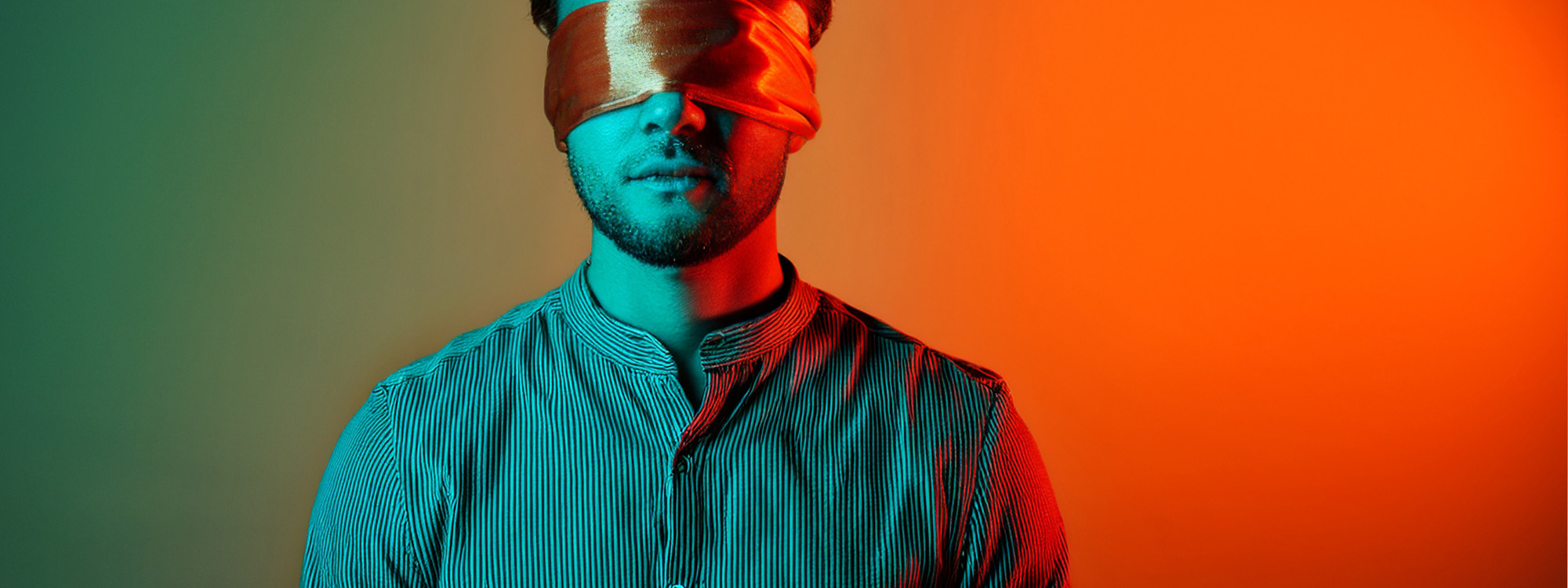| |
Why do people believe that all MAPs use illegal material? Pornography has been highly accessible online for decades now, in a way that was impossible before the internet. For people under 40, it is possible they can't remember a time when it was particularly difficult to access some kind of pornography and many do. It is not seen as unusual or incomprehensible.
Therefore, it is a common assumption that people attracted to children must be likely to routinely look for illegal material—and certainly there are plenty of news stories about pedophiles getting caught and about large amounts of illegal material obtainable online.
Even for people who are aware that not every person attracted to children will try to molest a child, it can still seem weird to claim that there are also some people with the attraction who don't at least search for or use recordings or photos of children in sexual situations, or related illegal items.
What is the fallacy?
The idea that anyone who is sexually attracted to children collects or uses illegal images.
What makes it false?
The fact that not everyone who is sexually or romantically attracted to pre-pubescent children uses illegal material material, or even necessarily any material at all.
Some people do go their entire lives with the attraction but never viewing illegal material.
There are some issues with definitions here. Some people would limit their definition of "child sexual abuse material" or to actual recordings or photos of children being sexually abused. Obviously this meets the definition.
Some people extend that to some different kinds of material:
- images or recordings of children that are made by children themselves when they are not in a position to give meaningful consent and then exploited by people for sexual gratification (also called Child Sexual Exploitation Material)
- photorealistic material generated using artificial intelligence, whether this is
- deliberately made to resemble specific real children (e.g. celebrities or children previously seen in CSAM) or
- deliberately made to not resemble any real child
- images showing real-life children without clothes on, but not engaged in sexual situations
- images showing real-life children in fashions or swimwear that emphasise their bodies, such as can be seen often on social media platforms ("childfluencers")
- material that is drawn or generated in a nonrealistic style (such as cartoons, loli or shota) whether this is:
- 'traced' from CSAM of actual real-life children, or
- purely from the artist's imagination
- based on a prompt using AI without guardrails
- text descriptions or stories of children in erotic or romantic situations
Some of the above are illegal everywhere and some (toward the bottom of the list) aren't illegal in many places.
You will have your own opinion for what you might call each of these types of material, and you may not think the same name describes each thing equally well.
However, certain of this material is not illegal and some pedophiles use legal material in preference to illegal material. Others use no material at all, just their imaginations. Some do not even have fantasies.
There is not good evidence about how many people with the attraction exist and there is not clear evidence about how many people who abuse children are not attracted to them. Therefore there is not enough evidence to make the statement. It is based only on prejudice.
Why do people believe it?
People believe it because:
(a) a lot of people who are attracted to children do use this material. There is good evidence for this, including good evidence that this is the motivation of most people who use it.
(b) there is some likelihood (but not a certainty) that the relative ease of obtaining the material means that a lot more people attracted to children use this material than would try to have sexual contact with a child.
(c) hardly any pedophiles (who only have the attraction) who only use legal material 'come out' to their families or seek publicity to explain that this is their situation, and so are invisible. The cases where people do come out create a lot of danger for the person. Some media appearances happen, but few enough for most people to be unaware of them or to consider them insignificant if they do.
(d) when pedophiles who don't use illegal material explain that this is what they are, people prefer to believe they are liars and assume that they are, in fact, also users of illegal material. This is because they have understood that criminals will lie about the acts they have committed and they assume any pedophile is a criminal.
The innocence of such people is very hard to prove, since nobody has anything other than their word that they have not committed a crime. A crime is supposed to only be suspected when there is evidence for it (if someone said you were a criminal, your first response would be "where's your evidence?"), but the presumption of innocence is not applied to people attracted to children. They are assumed to be criminals first, then on that basis assumed to be lying about being criminals. This is circular reasoning.
(e) there is lots and lots of media coverage every day of pedophiles who do use this material. Most days there is a story about this. Most days there is not a story about a pedophile who doesn't use illegal material—or rather, there probably are lots of such stories, but about people who are not identified in the stories as people with the attraction. This creates a bias in people's minds. Everybody they ever hear about who was attracted to children used child sexual abuse material. It seems like 100% of pedophiles they heard about used child sexual abuse material or did something similar.
Is any part of it true?
The key part that is true is the fact that the opposite is not true. If somebody said "people with attractions to children don't use illegal material" this would be false, as many do.
Where the fallacy comes in is that people seem to feel they must choose between only two possible situations
a) either ALL people with attraction to children use illegal material or
b) NONE of them do.
Since the second one is clearly false and also outrageous, people are comfortable sticking with the first, which is a very common belief and unlikely to be challenged. They may also prefer to believe it is fairer to potential victims to begin with suspicion of anybody who says something that suggests they have the attraction.
However, (b) being false does not make (a) true. In fact a is not true.
What if it were true?
It would be difficult to tell apart the world we live in (where not all pedophiles use illegal material) from a world where all pedophiles used this material.
In both worlds there would be laws against the material, arrests for the material and exposure of people's attractions through these arrests. Presumably the arrests would be more common, but it would be impossible to calculate by how much since we don't know how many people there are with the attraction.
The lack of obvious differences between the world in which the claim is true and the world in which it is false makes it particularly hard to challenge this fallacy by reasoning and thoughtful observation alone.
What would it take to get people to stop believing it?
For people to stop believing that all people with the attraction are not using illegal material, a lot of people would need to become aware of people close to them who have the attraction and who don't use illegal material.
It is difficult to believe a stranger's claims or the claims of someone anonymous on the internet. But it is easier to believe someone you have known for a long time if you have seen them in other contexts besides their attractions.
There are two ways this might happen.
One way is that the people are forced into the open as many gay men were during the AIDS crisis. A possible way this might happen to people attracted to children is that laws criminalising fictional material that they like may begin to identify those who use it in preference to (or as well as) abusing children or viewing photographic or video child sexual abuse material.
Another way is that people in this situation choose to tell their families or or friends, or to reach out for mental health support because they feel bad about being stigmatised. This is extremely risky at the moment but as society becomes less tolerant of milder and milder expressions of attraction to anybody under the age of 18, more and more people will begin to feel unease about such feelings and may reach out for help.
A second way in which people might stop believing that all people with the attraction use illegal material is the collection of evidence about this whole population, such that it becomes more possible to reliably estimate the total number of people who have the attraction and compare it to the number of such people who commit sexual offences against children. There has been interesting research about users of illegal material on the dark web, but this is not the same as research about pedophiles in general, and focuses only on the people who do use this material.
At the same time if more reliable information is gathered about people who do use illegal material—establishing how many actually have the attraction—it would be clearer still what the size is of four separate groups:
1) People who use illegal material and are attracted to children
2) People who don't use illegal material but who are attracted to children
3) People who use illegal material and are not attracted to children (sometimes people report searching this material for reasons other than attraction, such as being excited by taboo, or edgy concepts)
4) People who don't use illegal material and are not attracted to children.
We can be confident that group 4 will be the largest.
Groups 1 and 3 are difficult to measure because many people faced with illegal image charges against children often claim they are not attracted to them, and also because people who use these images are often assumed to be attracted to them without anyone actually checking.
Group 2 is difficult to measure because very few people with the attraction are likely to identify themselves to researchers, and because they are not usually in the criminal justice system, they are unlikely to feel compelled to do so. This group will need incentives.
| |






 the map fallacy: introduction
the map fallacy: introduction the first time i didn't view child pornography
the first time i didn't view child pornography map fallacy 1: molester fallacy
map fallacy 1: molester fallacy